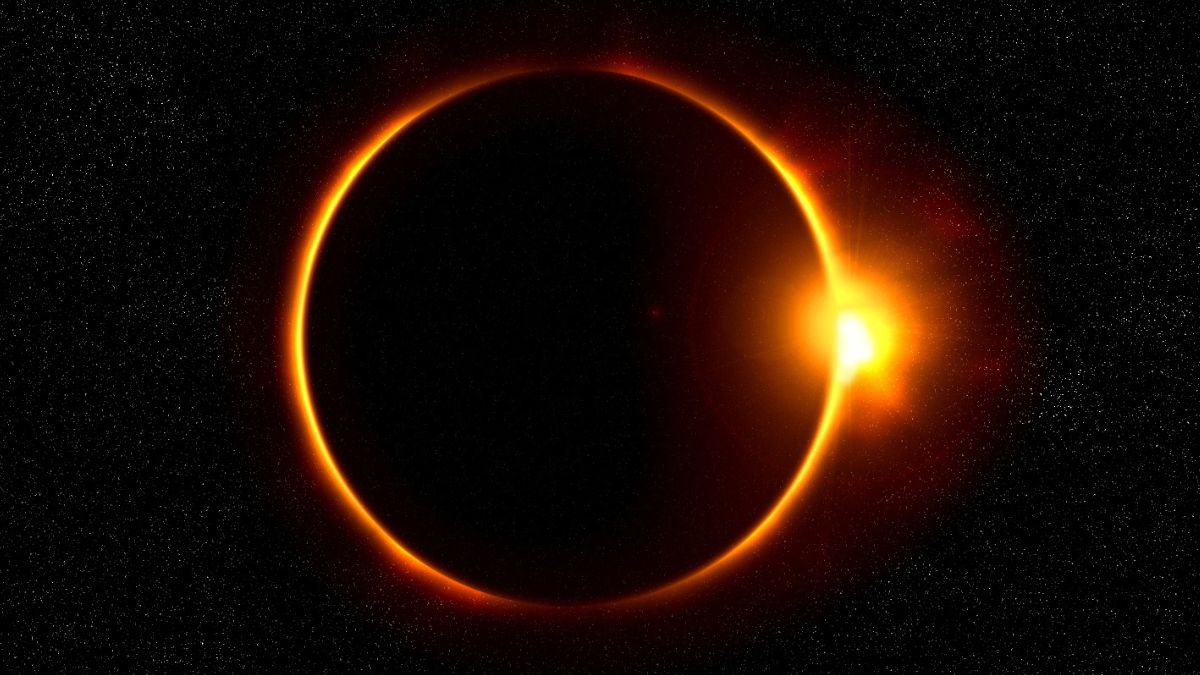By: Mohd Amin Mir
In a total solar eclipse, the moon passes between the sun and Earth, entirely covering the face of the sun along a small path of our planet’s surface. This is called the “path of totality.” The daytime sky turns dark, akin to dusk or dawn, and nocturnal animals have been known to wake up, confused into believing night has arrived.
In places along the path of totality, people will be able to view the sun’s corona – the star’s outer atmosphere – that typically is not visible because of solar brightness. People observing from outside the path of totality will see a partial eclipse in which the moon obscures most of the sun’s face but not all of it.
Of course, a cloudy day could spoil the view. After this one, the next total solar eclipse viewable from the contiguous United States will not occur until 2044.
Where will it be visible?
According to NASA, the April 8 eclipse will begin over the South Pacific, with its path reaching Mexico’s Pacific coast at around 11:07 am Pacific Time before entering the United States in Texas.
Its path then takes it through Oklahoma, Arkansas, Missouri, a tiny piece of Tennessee, Illinois, Kentucky, Indiana, Ohio, a tiny piece of Michigan, Pennsylvania, New York, Vermont, New Hampshire and Maine.
The path then enters Canada in Ontario and journeys through Quebec, New Brunswick, Prince Edward Island and Cape Breton, exiting continental North America on the Atlantic coast of Newfoundland, Canada, at 5:16 pm Newfoundland Time. A partial eclipse is due to be visible for people in all 48 contiguous US states.
Where are some of the best places to see the eclipse?
Some major cities and their metropolitan areas lay within or near the path of totality. Some of these include: Mazatlan and Torreon in Mexico; San Antonio, Austin, Waco, Fort Worth and Dallas in Texas; Little Rock in Arkansas; St Louis in Missouri; Louisville in Kentucky; Indianapolis in Indiana; Dayton, Columbus, Toledo and Cleveland in Ohio; Detroit in Michigan; Erie in Pennsylvania; Buffalo, Rochester and Syracuse in New York; and Hamilton, Toronto and Montreal in Canada.
What can you expect to see during the eclipse?
A total solar eclipse unfolds in several distinct stages.
It starts with a partial eclipse phase as the moon begins to pass between Earth and the sun, partially blocking it and leaving the sun looking like it has a crescent shape.
In the subsequent Baily’s Beads phase, points of light from the sun shine around the moon’s edges because of the irregular lunar topography, producing small beads of light.
In the diamond ring phase, a single bright spot appears along the lunar edge even as the sun’s atmosphere leaves a ring of light around the moon. The effect resembles the appearance of a diamond ring. This phenomenon precedes totality.
After totality, the other phases repeat as the moon keeps moving along its path until the eclipse ends.
How do you safely watch an eclipse?
Experts warn that it is unsafe to look directly at the bright sun without using specialized eye protection designed for solar viewing. Viewing an eclipse through a camera lens, binoculars or telescope without making use of a special-purpose solar filter can cause severe eye injury, according to these experts.
They advise using safe solar viewing glasses or a safe handheld solar viewer, noting that regular sunglasses are not safe for viewing the sun. The only moment it is considered safe for people to remove eye protection during a total solar eclipse is the brief time when the moon completely blocks the sun’s surface.
How big are the earth, moon, and the sun?
The moon will cover the sun’s face, as visible from Earth, only because the moon – in actuality much smaller than the sun – is so much closer to our planet. The moon’s diameter is 2,159 miles (3,476 km), compared to the sun’s diameter of about 865,000 miles (1.4 million km) and Earth’s diameter of 7,918 miles (12,742 km).
How do solar eclipses differ from lunar eclipse?
Lunar eclipses occur when Earth is positioned between the moon and the sun and our planet’s shadow is cast upon the lunar surface. This leaves the moon looking dim from Earth, sometimes with a reddish color. Lunar eclipses are visible from half of Earth, a much wider area than solar eclipses.
Keeping in view the dangerous situation caused by the Harmful Solar radiations people including children should avoid to see the Sun with necked eyes. Precautions should be kept in place while wandering outside. It is best to keep the small children inside though this eclipse is not fully visible in our country but Astronomers of NASA had advised to keep precautions.
Author is In-charge District Record Room Deputy Commissioner Office Anantnag



